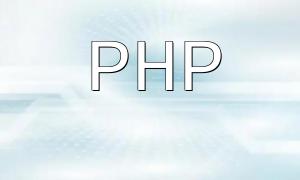In today’s digital age, data security has become a top priority in software development. Particularly in PHP-based web development, filtering and validating data are crucial steps in preventing security vulnerabilities. This article provides a comprehensive guide to data filtering techniques in PHP, including input validation, output escaping, and secure database interactions.
User input can contain malicious code or invalid characters. If left unchecked, this input could be exploited to launch attacks such as Cross-Site Scripting (XSS) or SQL injection.
Here are some common techniques for filtering input in PHP:
PHP offers built-in functions like filter_var()
Regular expressions provide powerful pattern matching for input validation. For example, to validate a mobile phone number format:
$phone = $_POST['phone'];
if (preg_match('/^1[3456789]\d{9}$/', $phone)) {
// Valid phone number
} else {
// Invalid phone number
}
Data retrieved from databases or external sources should also be filtered before being rendered on a page, to avoid client-side attacks.
You can use the strip_tags() function to remove HTML tags from a string, which helps prevent XSS attacks:
$html = "<b>This is <strong>bold</strong> text</b>";
echo strip_tags($html);
// Output: This is bold text
Special characters should be converted to HTML entities using htmlspecialchars() to prevent unintended script execution:
$text = "<script>alert('Hello');</script>";
echo htmlspecialchars($text, ENT_QUOTES, 'UTF-8');
// Output: <script>alert('Hello');</script>
Even after input validation, user data must be securely handled at the database level to avoid injection vulnerabilities.
Prepared statements separate SQL logic from data, preventing SQL injection attacks. Here’s how to insert data securely:
$name = $_POST['name'];
$age = $_POST['age'];
$stmt = $pdo->prepare("INSERT INTO users (name, age) VALUES (?, ?)");
$stmt->execute([$name, $age]);
Named parameter binding is another way to ensure safe database queries:
$name = $_POST['name'];
$stmt = $pdo->prepare("SELECT * FROM users WHERE name = :name");
$stmt->bindParam(':name', $name);
$stmt->execute();
$result = $stmt->fetch();
PHP data filtering is a fundamental part of secure web development. By using input validation, output escaping, and secure database practices, developers can significantly reduce the risk of data leaks and vulnerabilities. Adopting these practices as standard in your development workflow will lead to more secure and robust applications.



